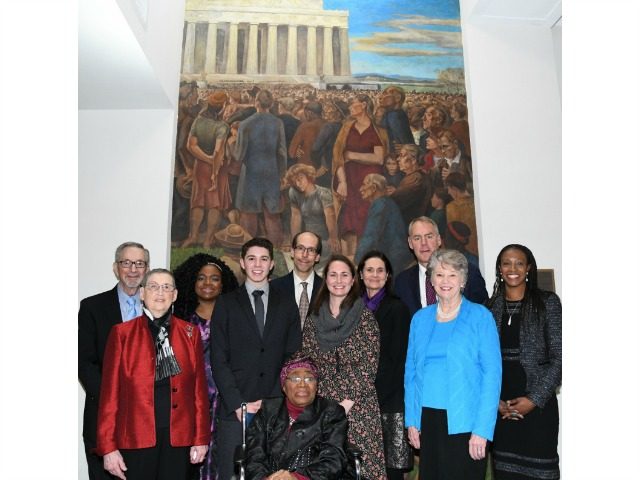Last month President Donald Trump signed into law legislation to recognize, preserve and protect the contributions African Americans made during the civil rights movement.
Rep. William Lacy Clay (D-MO) said when the law was signed:
This is a historic day. The African American Civil Rights Network Act will recognize, preserve, protect and share the remarkable American story of the modern struggle for civil rights, a unique national experience that touches every American, regardless of their age, ethnicity or heritage, the historic network will create tremendous educational opportunities by recognizing those brave souls from all walks of life who fought to make the promises enshrined in our constitution finally ring true.
And now the Department of Interior has used the African American Civil Rights Network Act for the first time by marking the start of Black History Month with the designation of a mural of iconic opera singer Marian Anderson as a historic site.
Interior Secretary Ryan Zinke said:
The civil rights movement is one of the most moving chapters of the American story – the people and events that shaped this period of history continue to inspire Americans to this day. Few events from this era stand out as more inspirational than the story of accomplished opera singer Marian Anderson holding a concert on the steps of the Lincoln Memorial after being barred from singing at Constitution Hall because of the color of her skin.
“As Secretary of the Interior, I am proud to call special attention to this aspect of our American heritage on the 75th anniversary of the dedication of a mural that captures the spirit of that groundbreaking event and serves as a cultural resource of national significance,” Zinke added.
The agency invited special guests and lawmakers for the designation of the mural.
Sen. Tim Scott (D-SC) said in the press release announcing the event:
I am glad to see Secretary Zinke and the Department of Interior utilizing the African American Civil Rights Network Act to honor such an important early moment in the Civil Rights movement. The mural of Marian Anderson’s concert at the Lincoln Memorial captures this historic event for generations to come, and this recognition is a fantastic way to celebrate Black History Month.
The Marian Anderson Museum is where the mural, created by Mitchell Jamieson, is on display.
“The Marian Anderson Museum is humbly honored to participate in such a historic and sacred event honoring the legacy of our great Marian and Mitchell Jamieson’s timely and poignant piece,” Jillian Pirtle, president of the Marian Anderson Historical Society, said.
DOI also provided information about Anderson and her legacy:
In 1939, Constitution Hall was at the center of a Civil Rights crisis when the Daughters of the American Revolution (DAR), an all-white organization of descendants of Revolutionary War soldiers, denied the world famous singer Marian Anderson use of its concert hall for a performance .
At that time, Constitution Hall was the only local venue large enough to accommodate Anderson’s typical audience, but the venue banned black performers. The organization would not make an exception for Anderson and claimed the hall was already booked. The National Association for the Advancement of Colored People (NAACP) and Anderson’s manager arranged for her to sing instead on the steps of the Lincoln Memorial. Accompanied by a piano, Anderson first serenaded an integrated gathering of 75,000 people with the patriotic ballad, “My Country, ‘Tis of Thee.”
Although Anderson and the DAR maintained the incident was merely a misunderstanding, the singer’s outdoor concert became a symbol for Civil Rights activism nation-wide. Anderson would go on to sing at Constitution Hall in front of an integrated audience in 1943.
“The act, which earned 72 cosponsors from both sides of the aisle in the U.S. House, authorizes the National Park Service to establish a program to preserve and protect the memory of the people and places that were significant in the struggle to secure equal rights for African Americans during the modern civil rights era between 1939-1968; along with other sites that have a verifiable connection to the civil rights movement that are included in, or eligible for the National Register of Historic Places,” Clay’s website states.

COMMENTS
Please let us know if you're having issues with commenting.